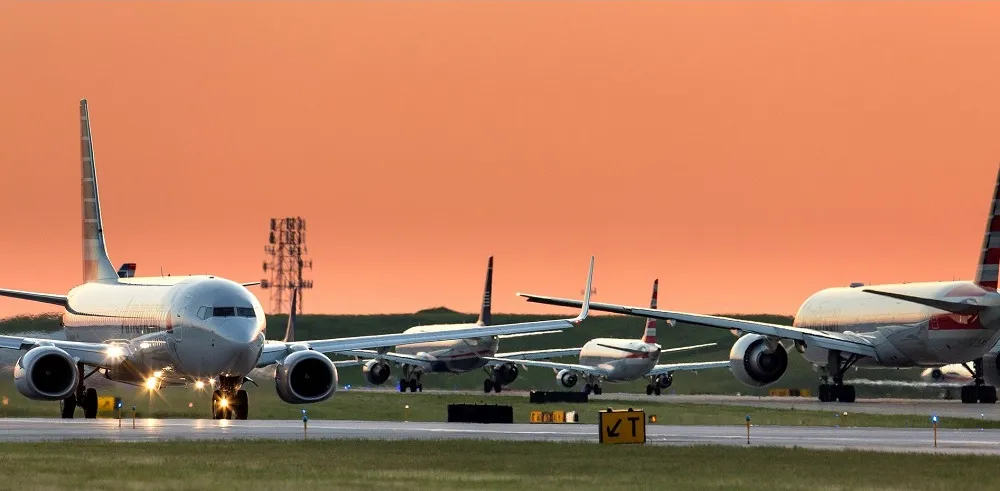
FAA clears almost 80 per cent of US airline fleet for low-vis landings
Jan 22, 2022

The Federal Aviation Administration has approved nearly 80 percent of the U.S. airline fleet for low-visibility landings, enhancing safety and operational efficiency in challenging weather conditions. This significant development allows a larger number of aircraft to utilize advanced landing systems, enabling them to land safely even when visibility is severely reduced. The initiative aims to improve flight schedules and reduce delays due to fog, rain, or other adverse weather factors. By expanding the capabilities of the fleet, the FAA is working to ensure that air travel remains reliable while maintaining high safety standards for passengers and crew.
Understanding Low-Visibility Landings
Low-visibility landings are critical operations that ensure the safety and efficiency of air travel during adverse weather conditions. The Federal Aviation Administration (FAA) has recently made significant strides by clearing almost 80% of the US airline fleet for these important landings. This initiative highlights the advancements in aviation technology and safety protocols that make air travel safer for passengers and airlines alike.
Importance of FAA Certification
The FAA certification for low-visibility landings is vital for several reasons:
- Enhanced Safety: The primary goal of the FAA's certification process is to ensure the safety of passengers and crew during low-visibility conditions.
- Operational Efficiency: Airlines can maintain schedules and reduce delays, even in adverse weather.
- Technological Advancement: The clearance demonstrates the progress in aircraft technology, particularly in navigation and landing systems.
The Role of Technology in Low-Visibility Landings
Modern aircraft are equipped with advanced technology that assists pilots during low-visibility landings. Key systems include:
- Instrument Landing Systems (ILS): These systems guide pilots to the runway using precise radio signals, enabling safe landings even in fog or heavy rain.
- Autoland Systems: Many aircraft can autonomously land using advanced sensors and controls, which is crucial for operations in low-visibility conditions.
- Enhanced Vision Systems (EVS): These systems use infrared cameras to provide pilots with visual information that may not be visible to the naked eye.
Impact on Airlines and Passengers
The FAA's clearance for low-visibility landings has a profound impact on both airlines and passengers:
| Impact | Details |
|---|---|
| Reduced Delays | With more aircraft certified for low-visibility landings, airlines can minimize delays caused by bad weather. |
| Increased Reliability | Passengers can trust that their flights are less likely to be canceled or diverted due to weather conditions. |
| Greater Peace of Mind | Knowing that the aircraft is equipped to handle low-visibility landings enhances passenger confidence in air travel. |
Challenges Ahead
While the FAA's clearance is a significant milestone, challenges remain. Some of these include:
- Training Requirements: Pilots must undergo rigorous training to operate in low-visibility conditions, ensuring they are prepared for such scenarios.
- Infrastructure Needs: Airports must have the necessary infrastructure, such as improved lighting and signage, to support low-visibility operations.
- Public Perception: Educating the public about the safety and reliability of low-visibility landings continues to be essential.
The Future of Low-Visibility Landings
The future of low-visibility landings looks promising as aviation technology continues to evolve. With ongoing advancements, we can expect:
- More Aircraft Certification: The remaining fleet will likely receive FAA clearance as technology improves.
- Improved Navigation Systems: New navigation and landing technologies will enhance safety and efficiency.
- Global Standards: As the US leads in low-visibility landing certifications, international standards may evolve to adopt similar practices.
Conclusion
The FAA's decision to clear nearly 80% of the US airline fleet for low-visibility landings is a landmark achievement that underscores the importance of safety and reliability in air travel. With advanced technology, rigorous training, and a focus on enhancing passenger confidence, the aviation industry is poised to navigate the challenges of low-visibility conditions effectively. This initiative not only benefits airlines by reducing delays and improving operational efficiency but also provides passengers with the assurance they need to travel confidently, knowing that their safety is the top priority.
Related Articles

Explore Thailand: The Best Islands to Visit for Paradise, Adventure, and Relaxation

The Ultimate Guide to the Best Islands in Thailand for Your Next Getaway

Do babies need passports? How to get a passport for a newborn

How to get a U.S. passport fast: here’s how to expedite the process

What is Mobile Passport Control: 5 reasons why you should use it

SENTRI vs. Global Entry: A detailed guide

Do you need a passport to go to the Bahamas? Let’s find out

Do you need a passport to go to Mexico? A detailed guide

Do you need a passport to go to Canada? We got the answer

Do You Need a Passport for a Cruise: An Essential Travel Guide

Booster Seat Requirements: All the Rules to Follow in Your Rental Car

What Are the World’s Most Powerful Passports, and How Does Yours Rank?

How to Take a Passport Photo at Home: A Helpful Guide

You've got to have heart! Southwest's new livery

Your opinion: Should water be free on low cost carriers?

Young women bolder than guys as solo travellers
